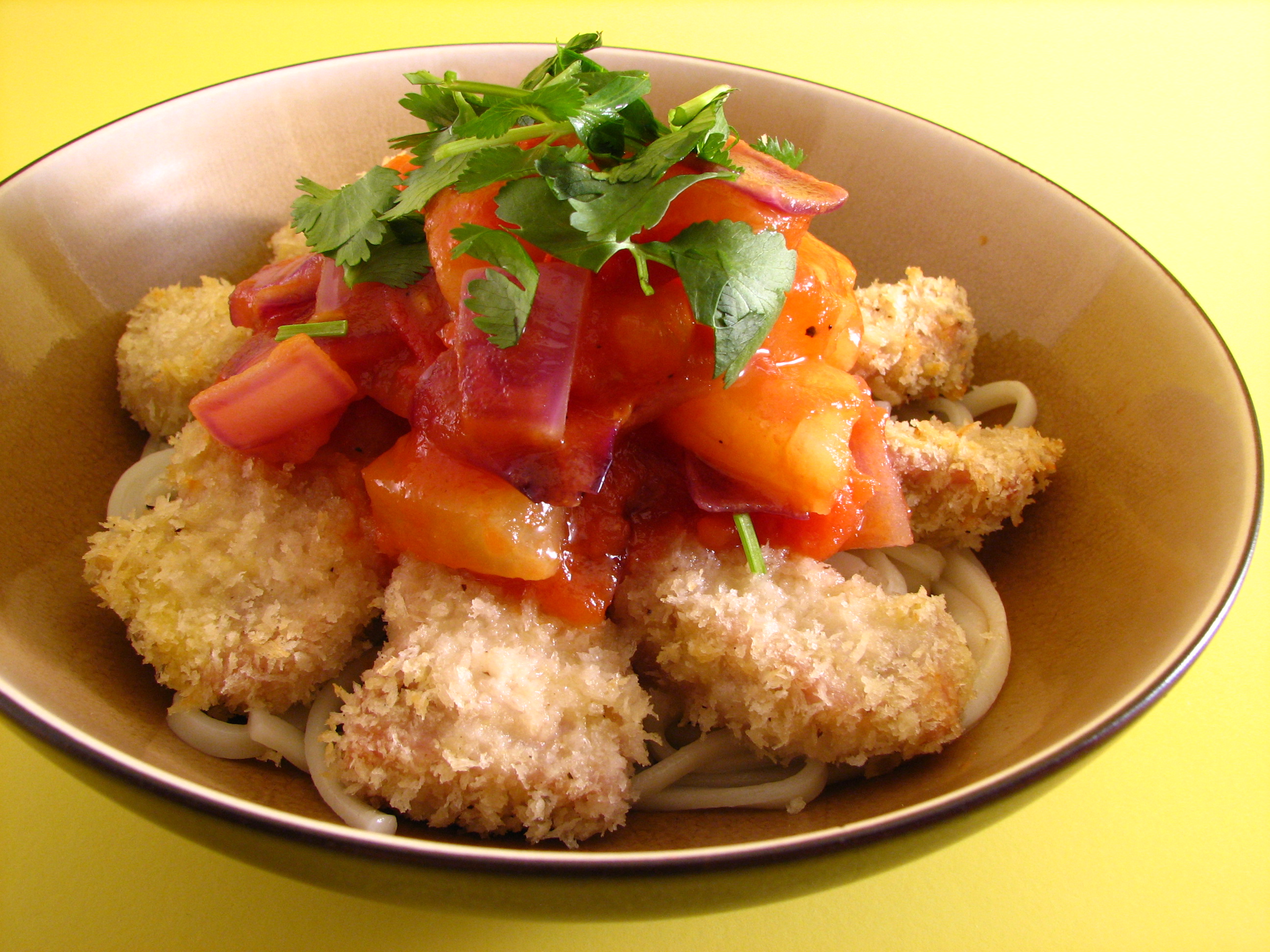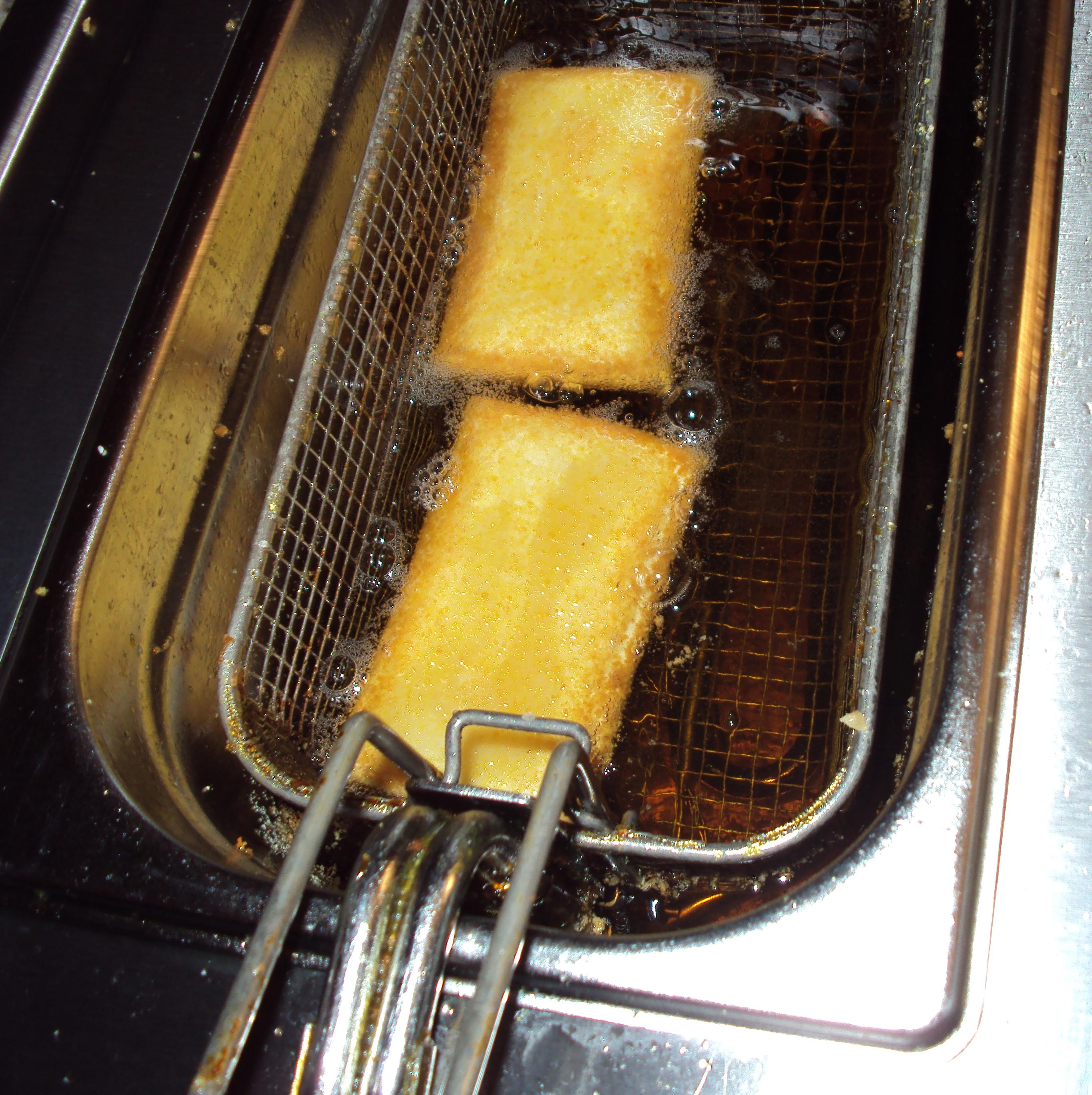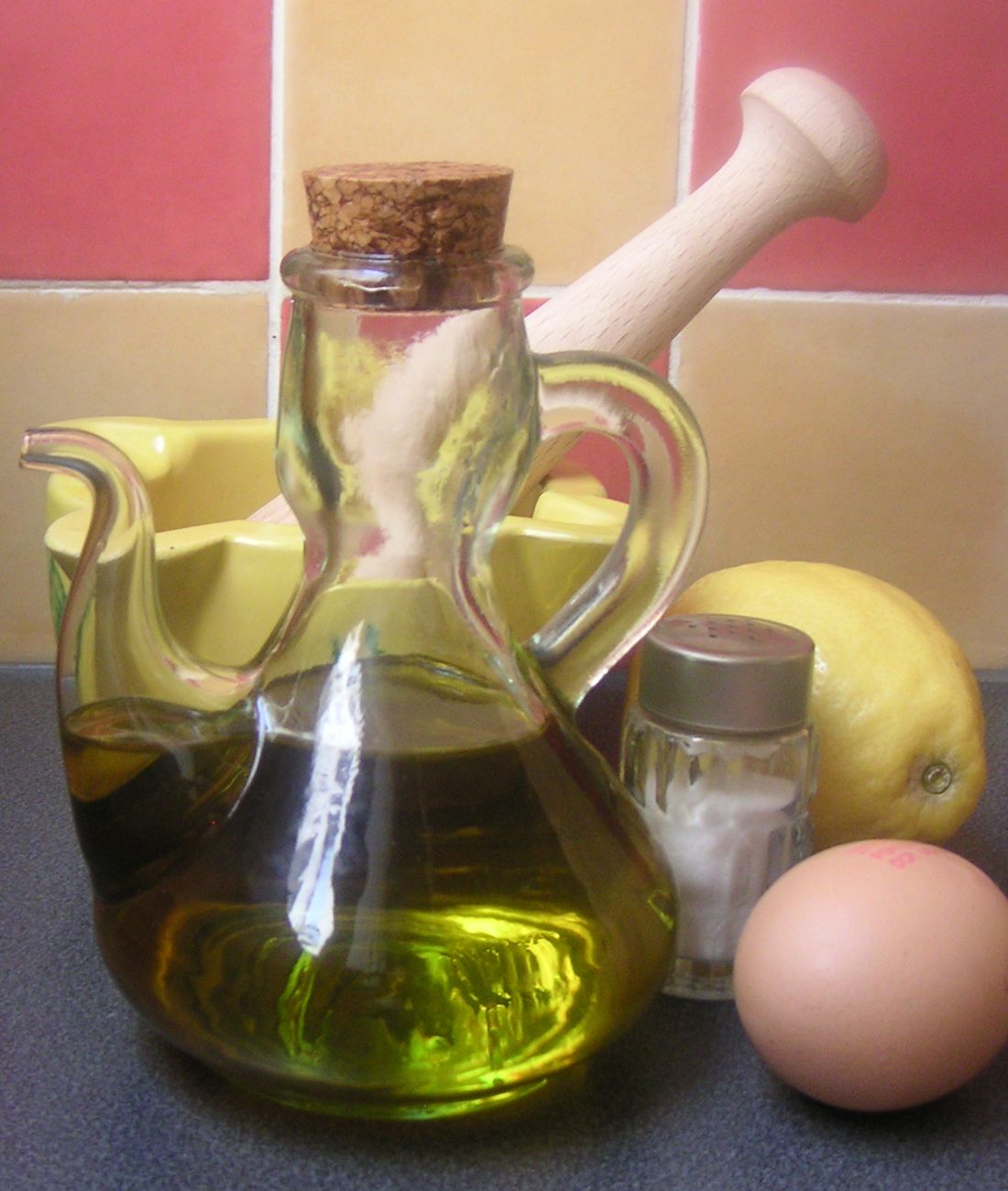|
Flamenquín
The flamenquín is an Andalusian dish made with slices of jamón serrano wrapped in pieces of pork loin, coated breadcrumb batter, and deep-fried. It is often garnished with French fries and mayonnaise. A common variation replaces the loin with boiled ham. It can also be made with other fillings, such as fish, cheese, or poultry. The size of the finished roll ranges from a small ball up to pieces long, and can be served sliced or whole. See also *Roulade *Spanish cuisine Spanish cuisine consists of the cooking traditions and practices from Spain. Olive oil (of which Spain is the world's largest producer) is heavily used in Spanish cuisine. It forms the base of many vegetable sauces (known in Spanish as ''sofri ... {{DEFAULTSORT:Flamenquin Andalusian cuisine Ham dishes Deep fried foods Stuffed dishes ... [...More Info...] [...Related Items...] OR: [Wikipedia] [Google] [Baidu] |
Spanish Cuisine
Spanish cuisine consists of the cooking traditions and practices from Spain. Olive oil (of which Spain is the world's largest producer) is heavily used in Spanish cuisine. It forms the base of many vegetable sauces (known in Spanish as ''sofritos''). Herbs most commonly used include parsley, oregano, rosemary and thyme. The use of garlic has been noted as common in Spanish cooking. The most used meats in Spanish cuisine include chicken, pork, lamb and veal. Fish and seafood are also consumed on a regular basis. Tapas are snacks and appetizers commonly served with drinks in bars and cafes. History Antiquity Authors like Strabo wrote about aboriginal people of Spain using nuts and acorns as staple food. The extension of the vines along the Mediterranean seems to be due to the colonization of the Greeks and the Phoenicians who introduced the cultivation of olive oil. Spain is the largest producer of olive oil in the world. The growing of crops of the so-called ''trí ... [...More Info...] [...Related Items...] OR: [Wikipedia] [Google] [Baidu] |
Andalusian Cuisine
Andalusian cuisine is the cuisine of Andalusia, Spain. Notable dishes include gazpacho, fried fish (often called ''pescaíto frito'' in the local vernacular), the jamones of Jabugo, Valle de los Pedroches and Trevélez, and the wines of Jerez, particularly sherry. The oldest known cookbook of Andalusian cuisine dates from the 14th century. Fried foods Frying in Andalusian cuisine is dominated by the use of olive oil that is produced in the provinces of Jaén, Córdoba, Seville, and Granada. Málaga, Almería, Cádiz and Huelva produce olive oil too, but in smaller amounts. The foods are dredged in flour ''a la Andaluza'' (meaning only flour, without egg or other ingredients, but may include flour from the chickpea especially for use in batters). They are then fried in a large quantity of hot olive oil. Fish and shellfish With five coastal provinces, the consumption of fish and shellfish is rather high: white shrimp from the Bay of Cádiz; prawns; murex; anchovies; baby squ ... [...More Info...] [...Related Items...] OR: [Wikipedia] [Google] [Baidu] |
Jamón Serrano
''Jamón'' (, pl. ''jamones'') is a kind of dry-cured ham produced in Spain. It is one of the most globally recognized food items of Spanish cuisine. It is also regularly a component of tapas. Most ''jamón'' is commonly called ''jamón serrano'' in Spain''.'' ''Jamón'' is the Spanish word for ham. As such, other ham products produced or consumed in Spanish-speaking countries may also be called by this name. Description ''Jamón'' is typically consumed in slices, either manually carved from a pig's hind leg held on a ''jamonero'' stand using a sharp thin slicing knife, or cut from the deboned meat with a rotatory cold-cut slicer. It's also regularly consumed in any shape in small portions. As a product, ''Jamón'' is similar to Portuguese ''presunto'' and to Italian ''prosciutto'', but the production differs by a longer curing phase (up to 18 months), giving it a dryer texture, deeper color and stronger flavour than the former. A whole ''Jamón'' leg is considerably cheape ... [...More Info...] [...Related Items...] OR: [Wikipedia] [Google] [Baidu] |
Pork Loin
File:British Pork Cuts.svg, 250px, British cuts of pork poly 187 219 187 194 173 196 Trotters poly 372 226 373 207 361 204 359 216 Trotters poly 171 141 166 104 287 117 294 152 Belly poly 167 102 178 27 315 23 274 102 Loin poly 361 201 371 181 394 177 373 201 Hock poly 174 191 163 182 174 173 178 184 Hock poly 387 172 372 156 371 149 387 137 407 85 368 61 370 43 328 27 315 38 302 137 343 172 Leg / Ham desc none Pork loin is a cut of meat from a pig, created from the tissue along the dorsal side of the rib cage. Chops and steaks Pork loin may be cut into individual servings, as chops ( bone in) or steaks (boneless) which are grilled, baked or fried. Joints or roasts A pork loin joint or pork loin roast is a larger section of the loin which is roasted. It can take two forms: 'bone in', which still has the loin ribs attached, or 'boneless', which is often tied with butchers' string to prevent the roast from falling apart. Pork rind may be added to the fat side of the jo ... [...More Info...] [...Related Items...] OR: [Wikipedia] [Google] [Baidu] |
Breadcrumb
Bread crumbs or breadcrumbs (regional variants including breading and crispies) consist of crumbled bread of various dryness, sometimes with seasonings added, used for breading or crumbing foods, topping casseroles, stuffing poultry, thickening stews, adding inexpensive bulk to soups, meatloaves and similar foods, and making a crisp and crunchy covering for fried foods, especially breaded cutlets like tonkatsu and schnitzel. The Japanese variety of bread crumbs is called ''panko''. Types Dry Dry breadcrumbs are made from dry breads which have been baked or toasted to remove most remaining moisture, and may have a sandy or even powdery texture. Bread crumbs are most easily produced by pulverizing slices of bread in a food processor, using a steel blade to make coarse crumbs, or a grating blade to make fine crumbs. A grater or similar tool will also do. Fresh The breads used to make soft or fresh bread crumbs are not quite as dry, so the crumbs are larger and produce a soft ... [...More Info...] [...Related Items...] OR: [Wikipedia] [Google] [Baidu] |
Deep Frying
Deep frying (also referred to as deep fat frying) is a cooking method in which food is submerged in hot fat, traditionally lard but today most commonly oil, as opposed to the shallow oil used in conventional frying done in a frying pan. Normally, a deep fryer or chip pan is used for this; industrially, a pressure fryer or vacuum fryer may be used. Deep frying may also be performed using oil that is heated in a pot. Deep frying is classified as a hot-fat cooking method. Typically, deep frying foods cook quickly: all sides of the food are cooked simultaneously as oil has a high rate of heat conduction. The term "deep frying" and many modern deep-fried foods were not invented until the 19th century, but the practice has been around for millennia. Early records and cookbooks suggest that the practice began in certain European countries before other countries adopted the practice. Deep frying is popular worldwide, with deep-fried foods accounting for a large portion of global cal ... [...More Info...] [...Related Items...] OR: [Wikipedia] [Google] [Baidu] |
French Fries
French fries (North American English), chips (British English), finger chips ( Indian English), french-fried potatoes, or simply fries, are '' batonnet'' or ''allumette''-cut deep-fried potatoes of disputed origin from Belgium and France. They are prepared by cutting potatoes into even strips, drying them, and frying them, usually in a deep fryer. Pre-cut, blanched, and frozen russet potatoes are widely used, and sometimes baked in a regular or convection oven; air fryers are small convection ovens marketed for frying potatoes. French fries are served hot, either soft or crispy, and are generally eaten as part of lunch or dinner or by themselves as a snack, and they commonly appear on the menus of diners, fast food restaurants, pubs, and bars. They are often salted and may be served with ketchup, vinegar, mayonnaise, tomato sauce, or other local specialities. Fries can be topped more heavily, as in the dishes of poutine or chili cheese fries. French fries can be made from ... [...More Info...] [...Related Items...] OR: [Wikipedia] [Google] [Baidu] |
Mayonnaise
Mayonnaise (; ), colloquially referred to as "mayo" , is a thick, cold, and creamy sauce or dressing commonly used on sandwiches, hamburgers, composed salads, and French fries. It also forms the base for various other sauces, such as tartar sauce, fry sauce, remoulade, salsa golf, and rouille. Mayonnaise is an emulsion of oil, egg yolk, and an acid, either vinegar or lemon juice; there are many variants using additional flavorings. The color varies from near-white to pale yellow, and its texture from a light cream to a thick gel. Commercial eggless imitations are made for those who avoid chicken eggs because of egg allergies, to limit dietary cholesterol, or because they are vegans. History ''Mayonnaise'' is a French cuisine appellation that seems to have appeared for the first time in 1806. The hypotheses invoked over time as to the origin(s) of mayonnaise have been numerous and contradictory. Most hypotheses do however agree on the geographical origin of the sauce ... [...More Info...] [...Related Items...] OR: [Wikipedia] [Google] [Baidu] |
Stuffing
Stuffing, filling, or dressing is an edible mixture, often composed of herbs and a starch such as bread, used to fill a cavity in the preparation of another food item. Many foods may be stuffed, including poultry, seafood, and vegetables. As a cooking technique stuffing helps retain moisture, while the mixture itself serves to augment and absorb flavors during its preparation. Poultry stuffing often consists of breadcrumbs, onion, celery, spices, and herbs such as sage, combined with the giblets. Additions in the United Kingdom include dried fruits and nuts (such as apricots and flaked almonds), and chestnuts. History It is not known when stuffings were first used. The earliest documentary evidence is the Roman cookbook, Apicius ''De Re Coquinaria'', which contains recipes for stuffed chicken, dormouse, hare, and pig. Most of the stuffings described consist of vegetables, herbs and spices, nuts, and spelt (a cereal), and frequently contain chopped liver, brains, and other ... [...More Info...] [...Related Items...] OR: [Wikipedia] [Google] [Baidu] |
Fish
Fish are aquatic, craniate, gill-bearing animals that lack limbs with digits. Included in this definition are the living hagfish, lampreys, and cartilaginous and bony fish as well as various extinct related groups. Approximately 95% of living fish species are ray-finned fish, belonging to the class Actinopterygii, with around 99% of those being teleosts. The earliest organisms that can be classified as fish were soft-bodied chordates that first appeared during the Cambrian period. Although they lacked a true spine, they possessed notochords which allowed them to be more agile than their invertebrate counterparts. Fish would continue to evolve through the Paleozoic era, diversifying into a wide variety of forms. Many fish of the Paleozoic developed external armor that protected them from predators. The first fish with jaws appeared in the Silurian period, after which many (such as sharks) became formidable marine predators rather than just the prey of arthropods. Mos ... [...More Info...] [...Related Items...] OR: [Wikipedia] [Google] [Baidu] |
Cheese
Cheese is a dairy product produced in wide ranges of flavors, textures, and forms by coagulation of the milk protein casein. It comprises proteins and fat from milk, usually the milk of cows, buffalo, goats, or sheep. During production, milk is usually acidified and the enzymes of either rennet or bacterial enzymes with similar activity are added to cause the casein to coagulate. The solid curds are then separated from the liquid whey and pressed into finished cheese. Some cheeses have aromatic molds on the rind, the outer layer, or throughout. Over a thousand types of cheese exist and are produced in various countries. Their styles, textures and flavors depend on the origin of the milk (including the animal's diet), whether they have been pasteurized, the butterfat content, the bacteria and mold, the processing, and how long they have been aged. Herbs, spices, or wood smoke may be used as flavoring agents. The yellow to red color of many cheeses is produced by adding a ... [...More Info...] [...Related Items...] OR: [Wikipedia] [Google] [Baidu] |
.jpg)
_01.jpg)
.jpg)
.jpg)






.jpg)